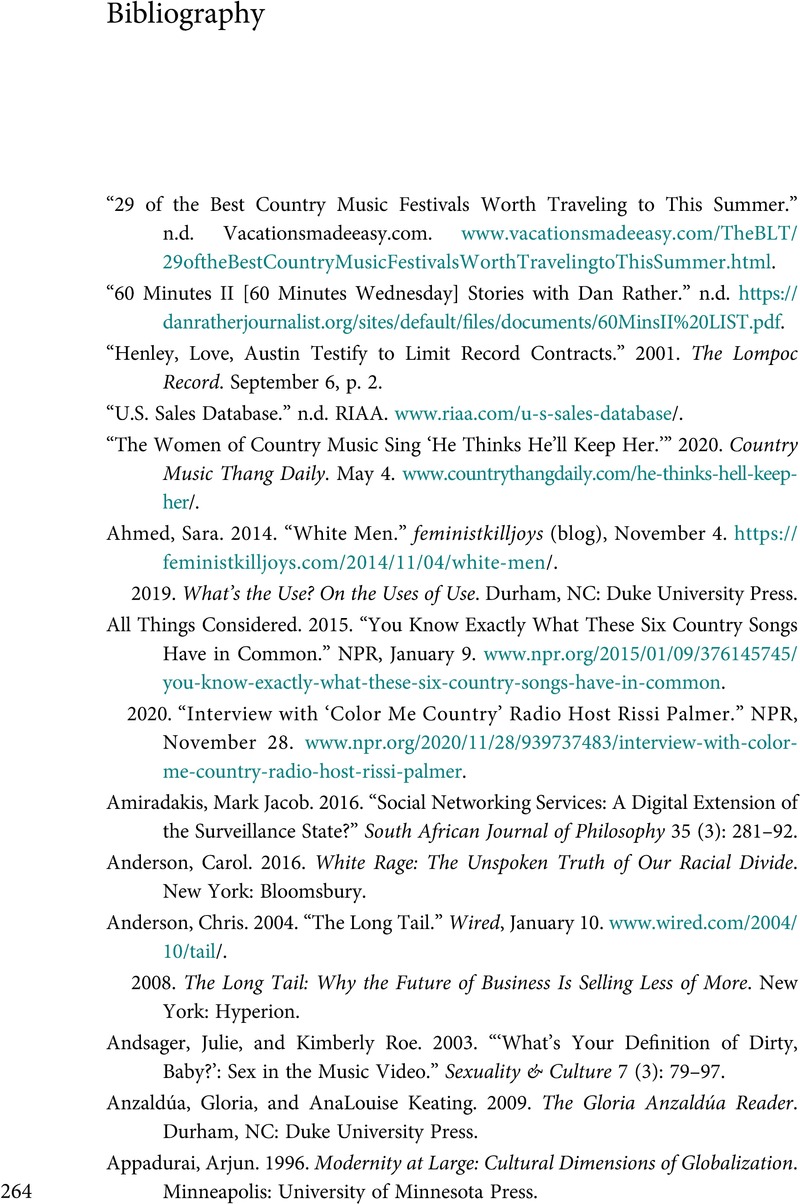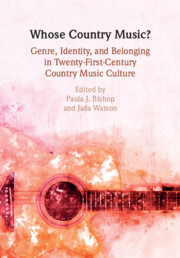Bibliography
Published online by Cambridge University Press: 03 February 2023
Summary

- Type
- Chapter
- Information
- Whose Country Music?Genre, Identity, and Belonging in Twenty-First-Century Country Music Culture, pp. 264 - 295Publisher: Cambridge University PressPrint publication year: 2022

